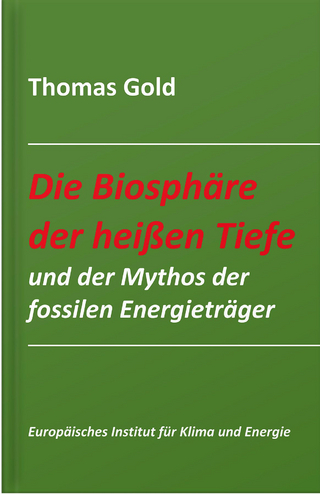
Scattering Methods in Structural Biology Part B
Academic Press Inc (Verlag)
978-0-323-99181-0 (ISBN)
Additional chapters cover Modeling Structure and Dynamics of Protein Complexes with SAXS Profiles (FoXSDock and MultiFoXS), Validation of macromolecular flexibility in solution by SAXS, Combining NMR, SAXS and SANS to characterize the structure and dynamics of protein complexes, Application of Molecular Simulation Methods to Analyze SAS Data, and more.
Prof. John A. Tainer trained in X-ray crystallography, biochemistry, and computation. With this foundation, he contributed to structural biochemistry for the biology for DNA repair, reactive oxygen control, the immune response, and other stress responses for >20 years. His NCI-funded papers report robust structural and biophysical measurements to advance understanding of cellular stress responses that are evolutionarily conserved and important in preserving genome stability and preventing diseases in humans. His methods, results, and concepts have stood the test of time: they are often used and cited >30,000 total times. At Scripps, Prof. Tainer created and ran the Scripps NSF Computational Center for Macromolecular Structure along with an NIH P01 on Metalloprotein Structure and Design. He also helped develop and utilize the Scripps share of the NSF San Diego Supercomputer Center. At LBL, he developed and directed the ~$2.9 million/year DOE Program “Molecular Assemblies Genes and Genomics Integrated Efficiently (MAGGIE) from 2004-2011. At Berkeley, Prof. Tainer designed, developed, and directed the world’s only dual endstation synchrotron beamline SIBYLS (Structurally Integrated BiologY for Life Sciences), used by >200 NIH labs. This unique technology integrates high flux small angle x-ray scattering (SAXS) and macromolecular X-ray crystallography (MX). At SIBYLS his lab develop, optimize, and apply technologies to determine accurate structures, conformations and assemblies both in solution and at high resolution. His lab defined an R-factor gap in MX revealing an untapped potential for insights on nanoscale structures by better modeling of bound solvent and flexible regions. At the University of Texas MD Anderson Cancer Center, Prof. Tainer is joining biochemistry and biophysics to fluorescent imaging measures of protein and RNA interactions on DNA for mechanistic insights. He is integrating these data with cryo-EM, MX and SAXS structures by linking MD Anderson and SIBYLS facilities. As an originator of applying proteins from thermophiles to defining dynamic structures and functional conformations, Prof. Tainer develop methods for measurements on structures including conformations, and assemblies in solution. Prof. Tainer has combined cryo-EM and X-ray structures with biochemistry to define functional assemblies. His lab introduced new equations for analyzing X-ray scattering for flexible macromolecules and complexes. His lab also defined a novel SAXS invariant: the first discovered since the Porod invariant ~60 years ago. The defined parameters quantitatively assess flexibility, measure intermolecular distances, determine data to model agreement, and reduce false positives. Prof. Tainer has a track record of successful collaborations, completing projects, sharing innovating approaches and technologies, developing insights along with new structural data, and providing fundamentally important technologies that improve the ways others do their research. He has benefited from continuous peer-reviewed NCI funding since 1999. NCI support has allowed Prof. Tainer to develop expertise in the methods development and in the structural biology of DNA repair, immune responses, and other stress.
1. Quality controls Jill Trewhalla 2. Refining biomolecular structures and ensembles by SAXS-driven molecular dynamics simulations Jochen S. Hub 3. Data analysis and modelling of small-angle scattering data with contrast variation Cy Jeffries and Andrew Whitten 4. Observing protein degradation in solution by the PAN-20S proteasome complex: state-of-the-art and future perspectives of TR-SANS as a complementary tool to NMR, crystallography and Cryo-EM Frank Gabel 5. Extracting structural insights from chemically-specific soft X-ray scattering Esther W. Gomez 6. Reconstruction of 3D density of biological macromolecules from solution scattering Thomas Grant 7. ATSAS- present state and new developments in computational methods Dmitri Svergun and Haydyn Mertens 8. Modeling Structure and Dynamics of Protein Complexes with SAXS Profiles (FoXSDock and MultiFoXS) Dina Schneidman 9. Validation of macromolecular flexibility in solution by SAXS Michal Hammel 10. Combining NMR, SAXS and SANS to characterize the structure and dynamics of protein complexes Michael Sattler 11. Application of Molecular Simulation Methods to Analyze SAS Data Susan Krueger and Joseph Curtis 12. From dilute to concentrated solutions of intrinsically disordered proteins: Interpretation and analysis of collected data Marie Skepo 13. Allosteric Inhibitors and drug discovery Chris Brosey 14. SAXS and Fold Prediction Susan Tsutakawa 15. SAXS Data-Assisted Modeling of Multidomain Protein Structures Janlin Cheng 16. FRET methods for ion channels/binding Manu Ben-Johny 17. Interpretation of solution scattering data for Protein Fibrillation Bente Vestergaard and Annette Langkilde 18. Measuring similarity and conformational changes Greg Hura 19. Insights from SAXS on disordered proteins on biological mechanisms: from protein folding to phase separation Joshua A. Riback 20. Lipid/peptide interactions from molecules to microbes Georg Pabst
| Erscheinungsdatum | 20.01.2023 |
|---|---|
| Reihe/Serie | Methods in Enzymology |
| Verlagsort | Oxford |
| Sprache | englisch |
| Maße | 152 x 229 mm |
| Gewicht | 840 g |
| Themenwelt | Naturwissenschaften ► Biologie ► Biochemie |
| Naturwissenschaften ► Biologie ► Genetik / Molekularbiologie | |
| ISBN-10 | 0-323-99181-5 / 0323991815 |
| ISBN-13 | 978-0-323-99181-0 / 9780323991810 |
| Zustand | Neuware |
| Informationen gemäß Produktsicherheitsverordnung (GPSR) | |
| Haben Sie eine Frage zum Produkt? |
aus dem Bereich


